7 Best Rifle Bipod Choices: Stable Solutions For Your Rifle
Looking to improve your shooting accuracy? Rifle bipods are the answer. These attachments stabilize your rifle or handgun, reducing human error and boosting precision, especially for long-range shots. They make bigger, longer, and heavier weapons easier to handle. Today, we’ll explore the 7 best rifle bipods, offering a range of options to suit all budgets and rifle types, helping you find the perfect one with ease.

Who Needs a Bipod?
Bipods are super handy for all kinds of rifles, not just the big ones used for long-range shooting. They really step up your game by giving you a stable base to shoot from, no matter what you’re aiming at. Hunters love them because they provide a solid rest when you’re not up in a tree stand, making it easier to take precise shots. Even AR-15s, typically used at shorter ranges, can become more accurate with a bipod, especially when paired with a modern LPVO (Low Power Variable Optic).
In the military, designated marksmen swear by bipods on their rifles. It helps them stay on target during missions, whether they’re in the field or training. And speaking of training, I use a bipod on my 22LR rifle when teaching new shooters. It keeps the rifle steady on the table, which is perfect for beginners who are just learning the ropes. It gives them confidence and makes sure they’re aiming safely downrange.
Basically, bipods are a game-changer for any rifle. They make shooting more precise without messing with how your gun performs. Whether you’re hunting, training, or in the military, having a bipod can really up your shooting game.
How I Set Up To Rank The Best Rifle Bipods
Alright, so diving into the world of rifle bipods, I’ve had my hands on quite a few – from the ones I’ve personally bought to those generously sent by companies for testing purposes. Heck, I’ve even had the chance to give some a go at media events, which really helped me nail down what works where.
But, before I hammered out this piece, I wanted to cover all bases. I hit up a few buddies in the firearms community to chat about the bipods they swear by. Their insights added a whole new dimension to my list of top picks. Trust me, combining our experiences really painted a comprehensive picture of what makes these bipods stand out.
I’ve gone ahead and sorted these bipods based on different needs – think stability, adaptability on various terrains, and how they handle different rifle types. ‘Cause let’s face it, like red dot sights, there’s no one ultimate bipod that suits everyone’s style or scenario.
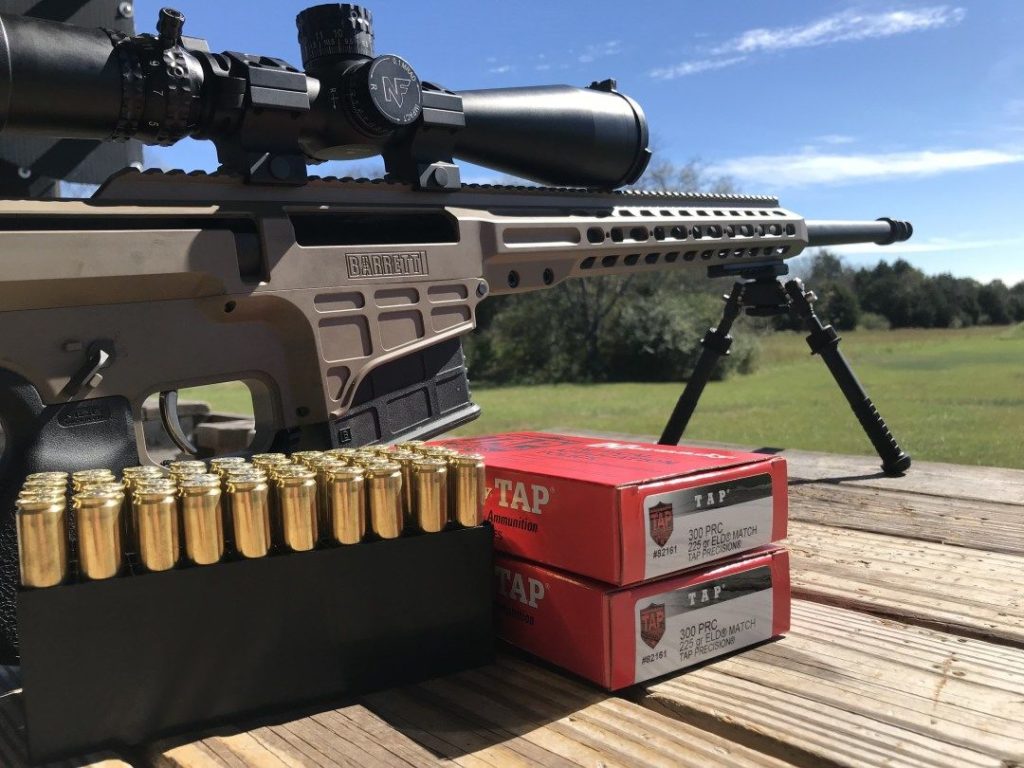
So, armed with all this info, let’s jump into the juicy bits – my handpicked selection of rifle bipods
Gun University’s Picks for Best Bipods
Best Rifle Bipods
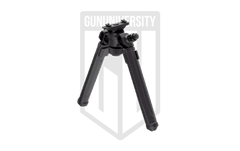 |
| Buy on Amazon | |
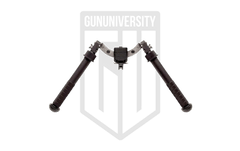 |
| Buy on Amazon | |
 |
| Buy on Amazon | |
 |
| Buy on Amazon | |
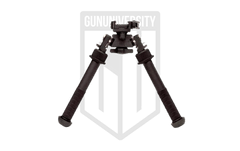 |
| Buy on Amazon | |
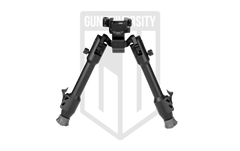 |
| Buy on Amazon | |
 |
| Check Price |
Best Rifle Bipods
Here is our list of the best bipods for your rifle shooting needs:
- Magpul Bipod
- Atlas Bipods 5-H
- Caldwell Accumax Premium
- Harris S-BRM Bipod
- Atlas PSR Bipod
- Warne Skyline Precision Bipod
- MDT Cyke Pod Gen2 Single Pull Short/PRS
Best Rifle Bipod Specifications
Below is a list of our Best Rifle Bipods. So we can compare and line up the specs from each of the products and help you make the best decision possible.
| Bipod | Weight | Height | Attachment Type |
|---|---|---|---|
| Magpul Bipod | 11 ounces | 6.3 to 10.3 inches | Pic/M-LOK/Sling QD/A.R.M.S. 17S |
| Atlas Bipods 5-H | 25.74 ounces | 6.62 to 10.5 inches | Attachment Type 1913 rail and Various No Clamp models |
| Caldwell Accumax Premium | 11.76 ounces | 13-30 inches | Picatinny |
| Harris S-BRM Bipod | 14 ounces | 6 to 9 inches | Picatinny rail or Sling Swivel |
| Atlas PSR Bipod | 11.42 ounces | 6.56 to 9 inches | Picatinny Rail |
| Warne Skyline Precision Bipod | 16.5 ounces | 6.9 to 9.1 inches | Pic or Arca |
| MDT Cyke Pod Gen2 | 21 ounces | 7.5 to 13 inches | Picatinny rail |
Best Rifle Bipod Reviews
Now we’ve had an overview and looked at our list, let us take the time to individually review each item. In this section we’ll be revisiting our specs, speaking into the product and looking at the pros and cons.
1. Magpul Bipod
Magpul Bipod
The Magpul Bipod for M-LOK offers serious strength and versatility at a price that provides unmatched value.
Magpul Bipod Specs
- Weight 11 Ounces
- Height 6.3 to 10.3 inches
- Attachment Type Pic/M-LOK/Sling QD/A.R.M.S. 17S
Magpul Bipod Review
I’ve crowned the Magpul Bipod as the best among rifle bipods, and let me tell you, it’s not just the hype. Magpul’s fusion of polymer expertise with top-notch bipod functionality truly stands out. Whether I’m out with my basic bolt action hunting rifle or rocking an AR 15 style setup, the Magpul bipod brings stability without breaking the bank.
What caught my eye is its low-profile design, perfect for unsupported firing. With a straightforward design, extending the legs with just one hand through seven different half-inch detents is a breeze. Whether I’m hitting the range, heading out for a hunt, or engaging in tactical scenarios, this bipod adapts seamlessly.
The lightweight bipod boasts a generous 50 degrees of cant and 40 degrees of pan, coupled with a glove-friendly locking knob for hassle-free adjustments and maximum stability. And let’s talk budget – it’s hard to beat the Magpul when you need a hunting bipod without draining your wallet.
In the world of rifle bipods, where precision shooting and versatile use matter, the Magpul rifle Bipod earns its top spot and I consider it to be my best hunting rifle bipod. It’s a game-changer for those looking for quality without compromise. Trust me; this bipod is a winner in every shooting situation.
Magpul Bipod Pros and Cons
- Affordable
- Lightweight
- Low Profile
- Not appropriate for heavy and hard recoiling rifles
2. Atlas Bipods 5-H
Atlas Bipods 5-H
The BT35-NC 5-H Atlas Bipod “No Clamp” has a two hole pattern of 1.100” with the holes being 10/32 threads.
Atlas Bipods 5-H Specs
- Weight 25.74 ounces
- Height 6.62 to 10.5 inches
- Attachment Type 1913 rail and Various No Clamp models
Atlas Bipods 5-H Review
The Atlas Bipods 5-H secures its spot as the second best rifle bipod on my list, and let me tell you why. This bipod takes precision shooting to a whole new level, especially for heavy-duty scenarios. Weighing in at almost 26 ounces, it’s a beast, and it’s the largest bipod in the Atlas lineup. As a fan of target shooting, I appreciate the 5-H’s capability when dealing with calibers that extend beyond a thousand yards and rifles that weigh a ton. It’s the go-to choice for pro shooters, and for good reason.
One standout feature is the exceptional cant options it offers, allowing me to apply precise cant to my rifle and lock it down securely. With 30 degrees of pan and cant, tracking and stability become second nature. The adjustable height, ranging from 6.62 inches to 10.5 inches, provides a super low profile ideal for prone positions or at the bench. The versatility continues with lockable legs at 45, 90, and 135 degrees.
In my experience, the Atlas 5-H Bipod stands out among the competition, especially in long-range shooting situations. Its robust build, extensive adjustability, and reliability in various shooting positions make it a top-notch choice for serious precision shooters.
Atlas Bipods 5-H Pros and Cons
- Extremely Strong
- Superbly Stable
- Versatile Height
- Hefty
3. Caldwell Accumax Premium
Caldwell Accumax Premium
The Caldwell Accumax Premium Carbon Fiber Pic Rail Bipod utilizes carbon fiber legs to keep weight to a minimum, while ensuring strength and durability.
Caldwell Accumax Premium Specs
- Weight 11.76 ounces
- Height 13-30 inches
- Attachment Type Picatinny
Caldwell Accumax Premium Review
As the third-ranked bipod on my list, the Caldwell Accumax Premium presents a compelling choice for hunting enthusiasts. The design of the Caldwell Accumax Premium makes them better suited as hunting rifle bipods and less so for heavy-duty precision rifles and tactical applications because they are lightweight gear. The fact the legs are 13 to 30 inches certainly puts it into its own realm.
The long legs are less for walking and more for allowing for different shooting positions; the Accumax Premium allows you to assume a good stable position in environments covered in brush and tall grass. The carbon fiber design ensures the weapon remains lightweight and at only 11 ounces.
The Caldwell Accumax Premium offers 360 degrees of swivel rotation and 10 degrees of cant. The bipod legs only lockout at 90 degrees. If you are looking for a cheaper option that has a similar design, I recommend going with the Caldwell XLA Pivot bipod.
Caldwell Accumax Premium Pros and Cons
- Long Legs
- Lightweight
- No 45 or 135-degree settings
4. Harris S-BRM Bipod
Harris S-BRM Bipod
The Harris Engineering Spring Loaded Bipod features spring-loaded legs for fast deployment and built in sling swivel studs for attaching to your sling.
Harris S-BRM Bipod Specs
- Weight 14 ounces
- Height 6 to 9 inches
- Attachment Type Picatinny rail or Sling Swivel
Harris Bipod Review
The Harris S-BRM bipod gives shooters the most proven and price-friendly bipods on the planet. The Harris bipods are some of the most famous and have been in use by the United States Marines, SOCOM, and the US Army. It’s an all-metal design that uses heat-treated steel and hardened alloys. The 6 to 9-inch height grants you a stable design that works best with modern semi-auto and bolt action rifles.
Now, this bipod might not be the heavy-duty precision shooter’s dream, but let me tell you, it’s a stellar companion for most shooters. Standing tall at 6 to 9 inches, it’s perfect for modern semi-auto and bolt action rifles. I love how those legs spring out when I’m ready to shoot in the prone position; it’s like a swift extension that screams readiness. Plus, the adjustable cant with a lockout option is a sweet deal, even though it lacks a pan feature.
The Harris S-BRM might not have all the bells and whistles, but its popularity means endless customization options with plenty of aftermarket support. For most shooters, this quality bipod strikes the right balance between reliability, functionality, and affordability, earning it a solid place in my top picks.
Harris S-BRM Bipod Pros and Cons
- Easy to Use
- Affordable
- Proven
- No Pan
5. Atlas PSR Bipod
Atlas PSR Bipod
Steady your rifle for the perfect shot with the Atlas Bipods PSR 1913 Picatinny Bipod.
Atlas PSR Bipod Specs
- Weight 11.42 ounces
- Height 6.56 to 9 inches
- Attachment Type Picatinny Rail
Atlas PSR Bipod Review
SOCOM went bipod shopping one day, and they ended up with an Atlas bipod in the cart. The Atlas PSR bipod is the current bipod in use by SOCOM and, ounce for ounce, one of the best bipods on the market. Designed with modern rifles in mind, the Atlas PSR grants users a durable, reliable, and extremely strong design that’s plenty user adjustable.
The height can be as low as 5 inches with the legs locked at 45 degrees, and the legs can lock at 0, 45, 90, 135, and 180. Adjustment height is perfect for most modern rifles and their various magazine lengths. The Atlas PSR bipod comes capable of 30 degrees of cant and 30 degrees of pan.
Unfolding, folding, and extending either leg is super simple and can be done with a single hand. It’s quick, easy but also stable and secure. This bombproof bipod makes waves in all the right ways.
Atlas PSR Bipod Pros and Cons
- Easily Adjustable
- Durable
- Lightweight
- Adjustments at ¾ inch only
6. Warne Skyline Precision Bipod
Warne Skyline Precision Bipod
The Warne Skyline Precision Bipod is one of the most functional ergonomic and strongest bipod on the market today.
Warne Skyline Precision Bipod Specs
- Weight 16.5 ounces
- Height 6.9 to 9.1 inches
- Attachment Type Pic or Arca
Warne Skyline Precision Bipod Review
Most of us likely know Warne from their series of awesome optic mounts and optic tools. Magpul getting into bipods is hardly a stretch, and the Warne Skyline Precision bipod is certainly a for shooters by shooters bipod. The Skyline precision features immaculate machining and tough-to-beat durability.
The height is a standard 6.9 to 9.1 inches, and the legs lock in the 0, 45, and 90-degree positions. The bipod comes with 22 degrees of cant and 44 degrees of pan. Plenty of adjustments, and the design certainly fits competitive shooting standards. At the same time, it could be used for tactical applications and hunting.
With a weight of only 16.5 ounces, the Skyline is far from heavy. It’s a very versatile and extremely well-made bipod that’s perfect on a variety of rifles. It’s a great mix of PRS features with tactical weight and design.
7. MDT Cyke Pod Gen2
MDT Cyke Pod Gen2
If you’re a hunter or a match shooter looking for a game-changing piece of gear, look no further than the MDT Bipod.
MDT Cyke Pod Gen2 Specs
- Weight 21 ounces
- Height 7.5 to 13 inches
- Attachment Type Picatinny rail
MDT Cyke Pod Gen2 Single Pull Short/PRS Review
The MDT Cyke Pod Gen2, holding down the seventh spot on my list, brings a new level of precision to the PRS competition circuit. As the go-to bipod for professional shooters, it’s no slouch in the accuracy department. The 170 degrees of cant, coupled with a tension adjustment knob, gives me the freedom to fine-tune my shot placement. And the 360 degrees of lockable pan? A game-changer for tracking and shooting at will.
MDT nailed the versatility game with various sizes, but the Single Pull short/PRS with its 7.5 to 13 inches range is my personal favorite – suitable for most shooters. What’s fantastic is the separate tension adjustments for both pan and cant features, allowing for a truly tailored shooting experience. MDT Cyke Pod Gen2 might not grab the top spot, but its premium features and precision make it a solid choice for those serious about their PRS game.
That said, I didn’t particularly like how complicated it is to configure and its bulk means I can’t carry it around, so personally, I’m not the biggest fan of this bipod. But if you are looking for accuracy and fine-tuning, it could be the right one for you.
MDT Cyke Pod Pros and Cons
- Extremely Well Made
- Versatile height
- Plenty of Pan and Cant
- Expensive
Best Rifle Bipod – Buyers Guide
So now we know the best bipods, but let’s explain the features and details that make them the best. Our goal here is to allow you to understand what makes a good bipod and how you can go forward and choose your own. This section will give you a better understanding of why I chose the above bipods.
Height
How tall is the bipod, or how tall can it be? This can be a serious consideration that will often depend on how you plan to shoot and what you plan to shoot. Another consideration is your weapon’s height, which often ties into magazine length.
This won’t be an issue on most bolt action rifles, but on modern rifles like the AR-15, then the longer magazines can get in the way of short bipods. It might be the first decision you need to make before you consider anything else.
Typically the lower the bipod, the more stability you’ll have. Additionally, lower bipods allow tactical shooters to take a lower prone position.
Let’s take a look at some of the common bipod heights you’ll run across.
Shorter than 6 Inches – These short little bipods aren’t all that common these days. Typically bipods with legs shorter than six inches will extend to 9 or 10 inches. However, anything less than six inches should be reserved mostly for bench rest shooting. They don’t offer much clearance but do offer tons of stability.
6-9 inches – 6-9 inch tall bipods tend to be the most popular for a variety of purposes. They tend to be quite stable and provide an acceptable height for both bench rest shooting and prone shooting. They are quite popular in the tactical world and allow for a stable, versatile stability range.
10-15 inches – These taller bipods often accommodate larger weapons or are used in environments where getting low in the prone isn’t easy. They aren’t too uncommon in the hunting world, where a shooter might need to clear brush or tall grass. They can also be used for shooting uphill a little easier.
Over 15 Inches – Bipods can get as tall as 30 inches or so. These are used to take shots from the sitting position. You can shoot in kneeling, sitting, and similar positions. It makes it easy to shoot when hunting and sitting at the base of a tree or hill. They put you well above high grass and brush but still provide good stability. They tend to work very well for uphill shots.
Adjustment Range
Most bipods are not a fixed height. They offer adjustments between two different ranges. When shopping for a bipod, you need to consider the minimum height and total height to ensure it will allow you to accomplish your goal.
Most premium or even just standard-quality bipods feature independent leg adjustments. This means each leg can be adjusted to a different height to use on uneven terrain. Rarely a bipod won’t have this feature, so it might be wise to avoid it when they lack it.
Adjustments can be made to predetermined lengths or can be fluid. Fluid tends to be more versatile but slower to properly set up. Quick pull allows you to move rapidly between different preset lengths and get into shooting.
Leg Positions
Leg position is where the bipod legs can lock out at. The different angles allow for different approaches, allow a taller bipod to be used in a lower prone position, help remedy weird terrain issues, and are generally convenient.
A good bipod should lock in the zero position, meaning the bipods are folded and out of the way. They should also allow you to lock the legs at 45 degrees, 90 degrees, and 135 degrees. This ensures you have a very versatile option for any situation.
Panning
Panning is your ability to move from left to right with your rifle locked into a bipod and your bipod locked into the ground. The ability to pan ensures you are not locked into one position that requires you to uproot your rifle to change. Panning allows you to scan an area, track a target, and more.
Pan is measured in degrees and varies widely and allows you to go anywhere from the humble 30 degrees to 360 degrees of pan. A locking lever can be a nice add-on with the higher limits since you won’t be spinning around your rifle.
Cant
Cant on a rifle bipod allows you to use uneven ground without having an unlevel rifle. A little cant allows the rifle to become level. Cant is always nice, and the further away you are shooting, the more important it is. Cant with a locking lever allows you to maintain a level rifle with a stable base.
Feet Design
The feet of your bipod can be a very personal decision. It is a preference, and you’ll also need to consider your terrain. The feet vary between circular rubber feet that are grippy, sled-style feet, spikes, claws, and more.
If you plan to shoot on hard terrain, you might want soft rubber. On good, firm ground, you might want sleds. You might want spikes or claws if you need to dig into soft dirt or small pebble-like terrain. If you’re shooting off someone else’s benches, you might avoid spikes and claws that tear wood, carpet, etc., up.
Additionally, there are several patterns for different feet styles. Most good bipods allow you to switch between bipod feet, and threat and design patterns have become commonplace. Atlas and Harris, for example, are very popular and present on bipods made by other companies. Pay attention to the ability to change the feet and the pattern required.
Attachment Options
How does the bipod attach to your rifle? There are several acceptable ways, and we’ll cover each here. Trust me, you need to pay attention to your rifle and your attachment method, or you’ll end up paying for a return tag.
Sling Swivel – Bipods can attach directly to the sling swivel. They fit with ease and lockdown tight on the rifle. These are very handy if you don’t have any type of traditional rail on your rifle. Lots of standard bolt action rifles don’t have rails, and the sling swivel makes it simple and easy to mount a bipod to your weapon.
Picatinny Rail – Most modern rifles, especially AR-type rifles, have some form of Picatinny rail across the bottom of the gun. These rails allow the bipod to attach directly to the rifle, and it is one of the simplest means.
Direct M-LOK – Direct M-LOK attachments work a lot like rail attachments. Instead of just squeezing in on a rail, it directly attaches to the M-LOK slots. It’s stable, and the lightest weight often means attaching a bipod. If you have a modern M-LOK handguard, this is the best way to attach a bipod.
The Weapon Factor
Your bipod should match your rifle. The bipod that’s best for an AR 15 carbine likely isn’t the best for that big Barrett 50 caliber rifle. The weapon’s size, weight, and recoil need to be factored into your selection. The bipod will tear itself to pieces if the weapon is too big and the recoil too great.
If you pick a bipod made for a powerful rifle and place it on a not-so-powerful rifle, the biggest problem will be the extra weight and unnecessary costs. Look at what weight and recoil the bipod can withstand when you shop for a bipod. You can also look at military contracts, professional shooters, and the weapons and bipod combinations they use to try and find the right bipod for your setup.
It’s Got Legs
Bipods seem to be a fairly simple subject and a fairly simple item. However, once you get into the weeds, you’ll see why so many bipod companies exist. There is a great big need for good bipods for various rifles and purposes. At this point, there is no way you can’t find the right bipod for your specific rifle and its specific task.
Hopefully, you’ve walked away a bit more educated on the subject with the right bipod in mind for your next trip to the range.
Best Rifle Bipod – FAQs
Can bipods be used with hunting rifles?
Yes, bipods are great for hunting rifles. They really help with accuracy and stability, which is super important when you’re tracking game. They give you a solid platform to shoot from, especially in places where you can’t find a natural rest.
How do shooting sticks compare to bipods?
Shooting sticks and bipods both keep your rifle steady, but they have their differences. Bipods are more stable, perfect for lying down or using a bench. Shooting sticks are more flexible and better for standing, kneeling, or sitting positions. They’re handy for hunters who need to move fast and set up quickly.
What shooting positions are best suited for using a bipod?
Bipods are handy for different shooting positions. The prone position is stable and common, good for long-range shots. Bench rest and seated positions work well with bipods too. For hunting, taller bipods help in seated or kneeling shooting positions. So, the shooting position you choose can depend on what you need for your shooting activity.
How do I attach a hunting bipod to my rifle?
Hunting bipods can be attached to rifles using various methods, including sling swivel studs, Picatinny rails, and direct M-LOK attachments. Check your rifle’s configuration and choose a bipod that is compatible with its attachment points.
What are the benefits of carbon fiber legs in bipods?
Carbon fiber legs are lightweight and strong, making them ideal for situations where weight savings are crucial, such as in hunting. They offer the strength needed to support the rifle without adding excessive weight, which can be beneficial during long hunting trips.
Recent Posts
November 25, 2025
November 22, 2025
November 21, 2025
November 20, 2025


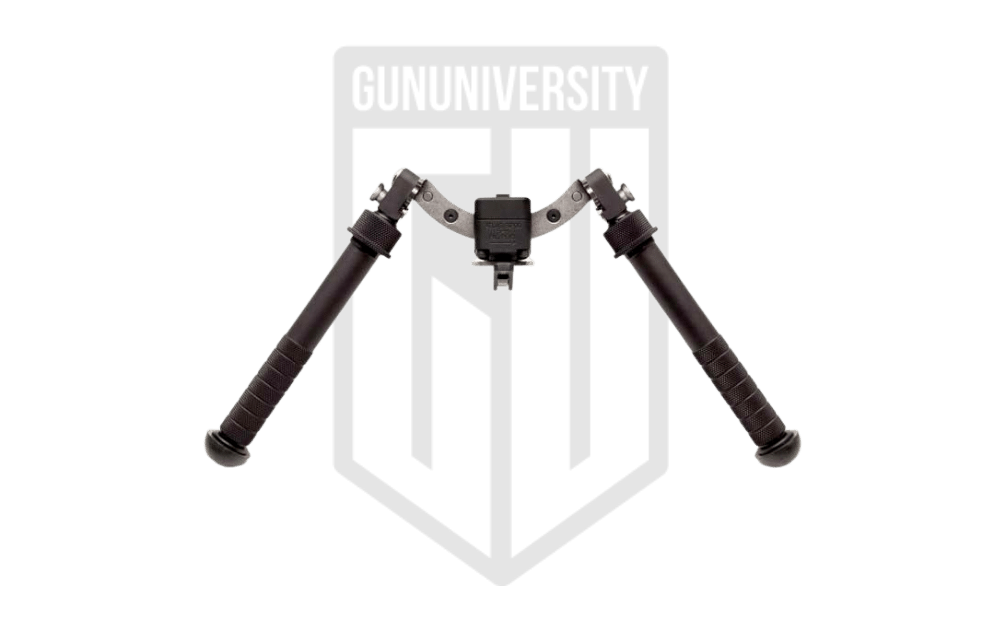
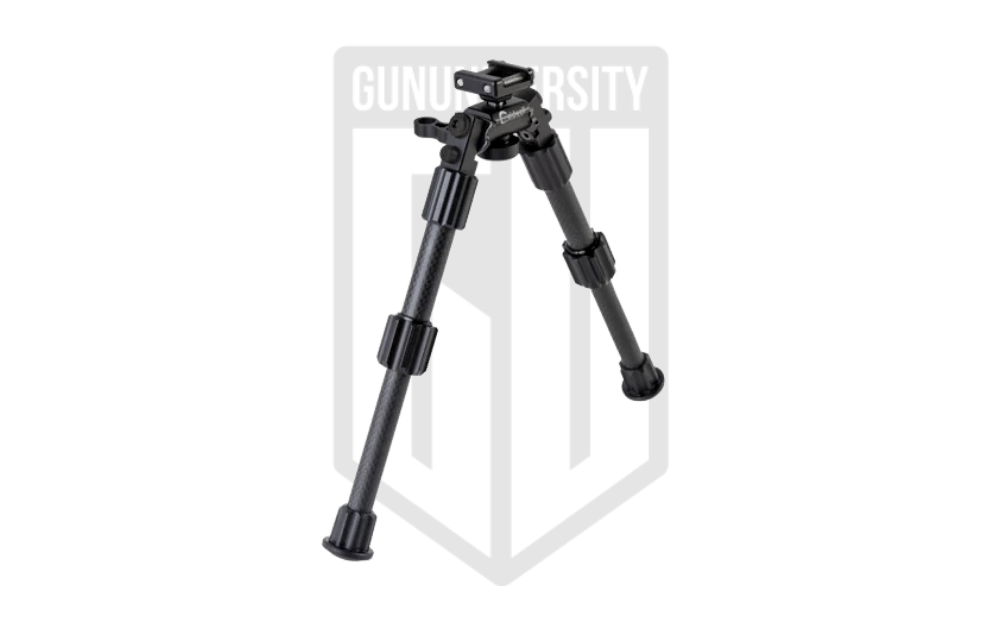
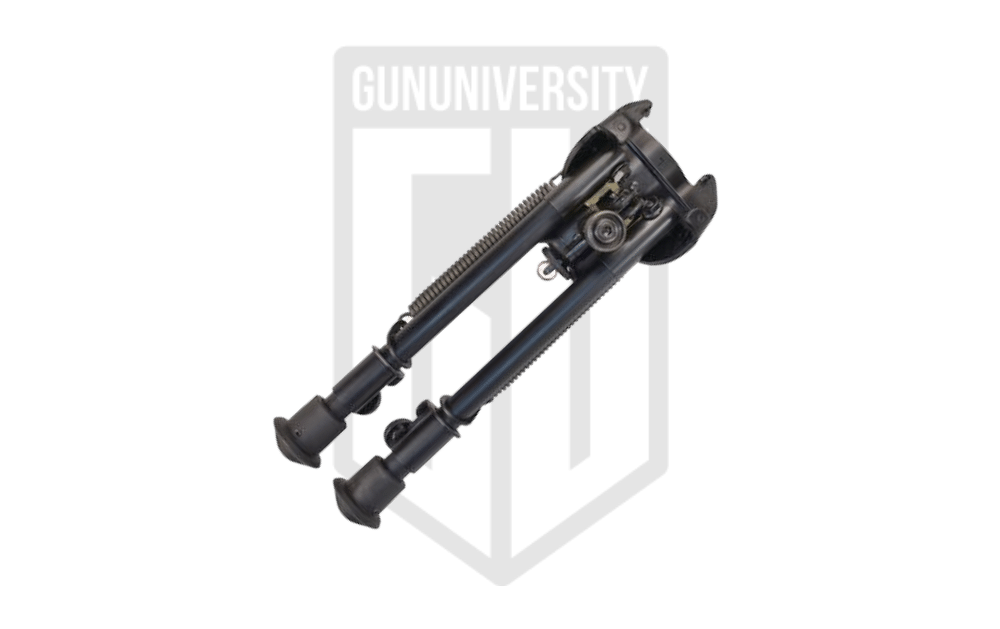

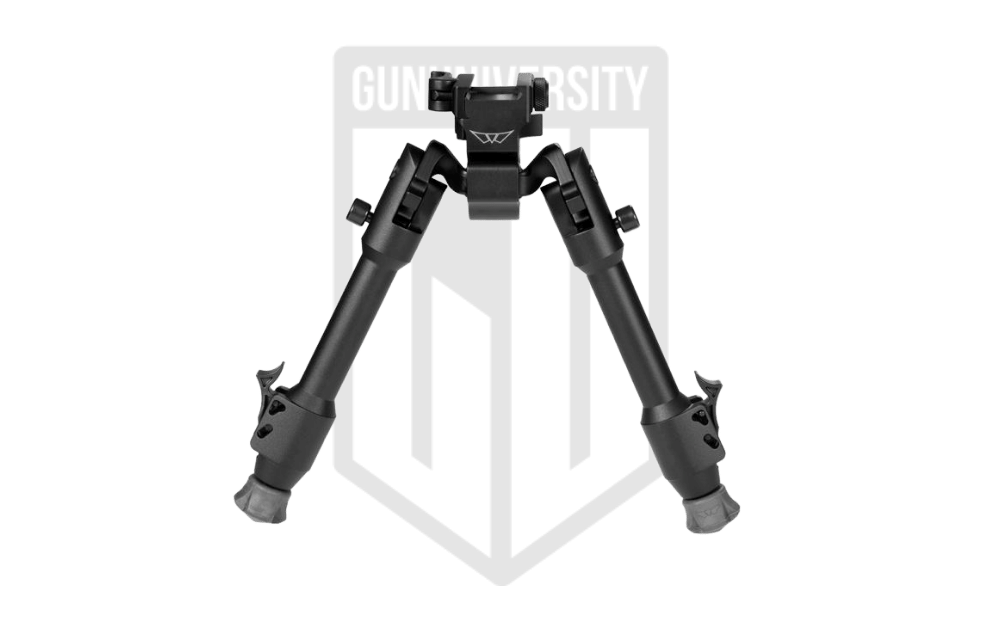
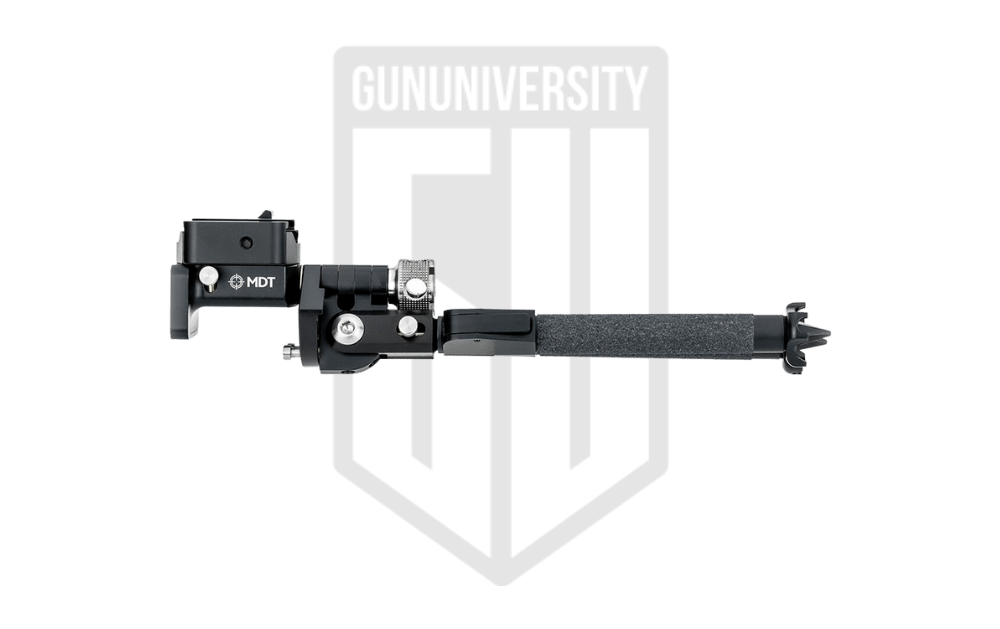
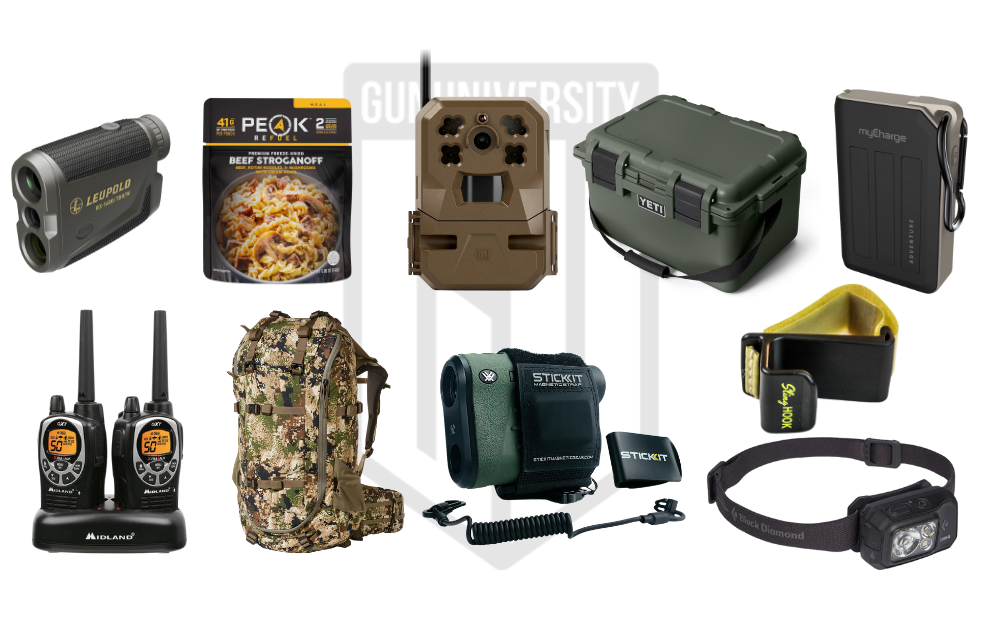
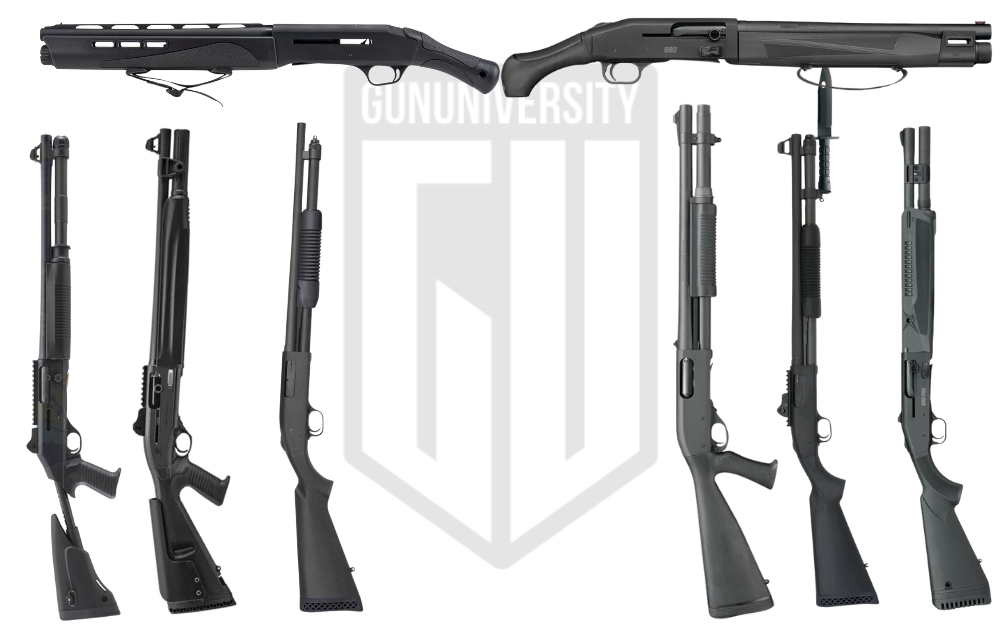

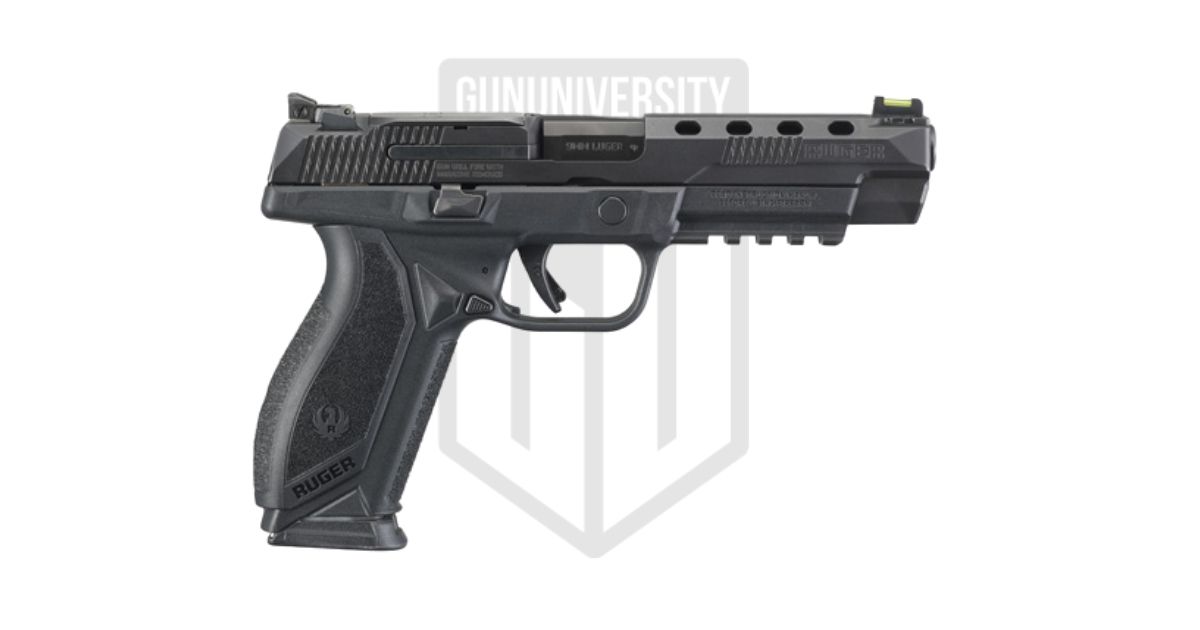
One of the better bipod reviews in some time.
IMHO the Atlas is hands down a battle field bipod, literally bomb proof and is superior to all other on this list especially if put on a long action rifle. The author did mention that some are not great for rifles with higher recoil energy, and he’s absolutely correct. I have Harris bipods fall apart (the nut, and broken spring) while loading the bipod in prone shooting AI, another time was on the M40A5 300 WM (not a clone), and it’s why I have a love hate relationship with HARRIS.
The only advantage Harris has over Atlas is the legs tend to load better(bit more flex forward) where the Atlas legs are a bit stiffer. The technique is a slightly different when you put a load on bipods with stiffer legs.